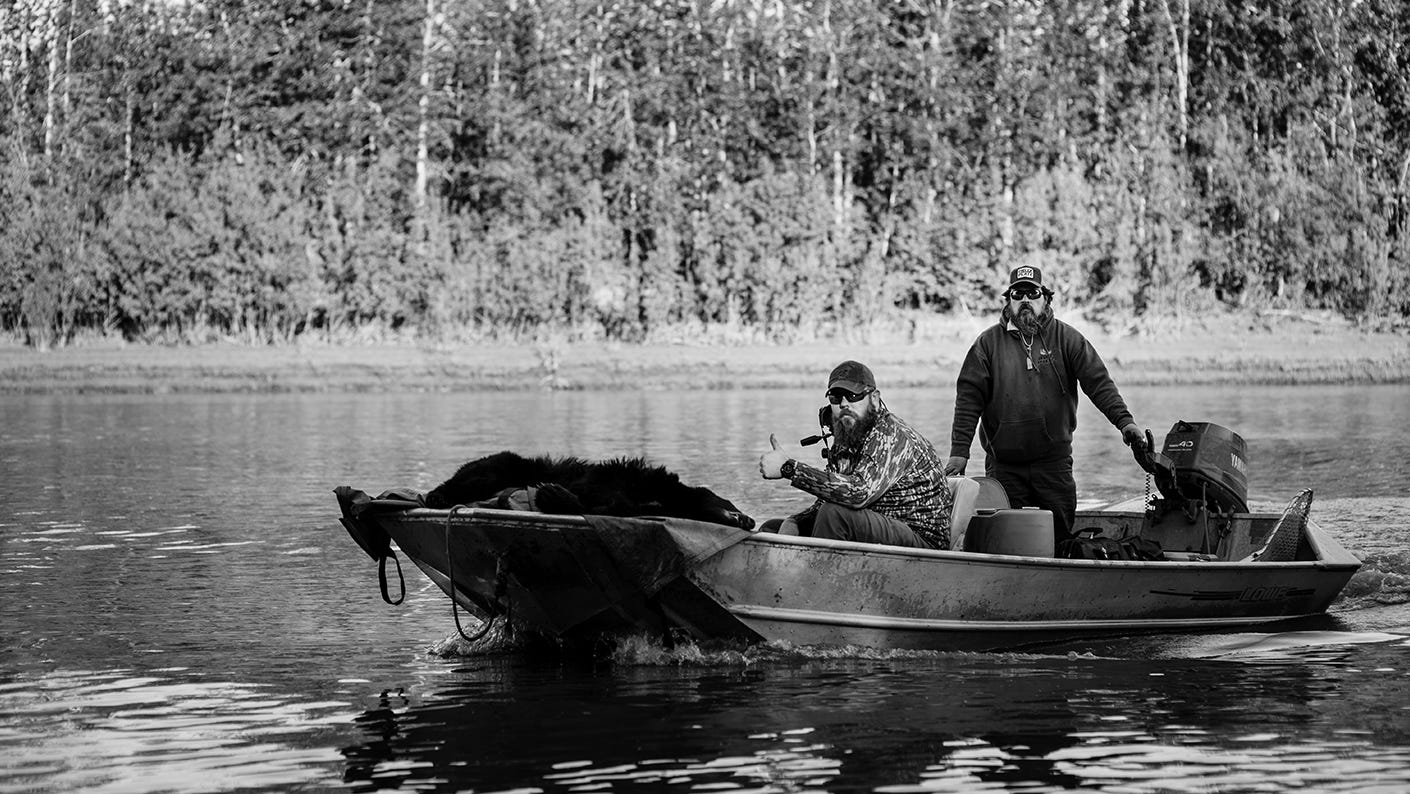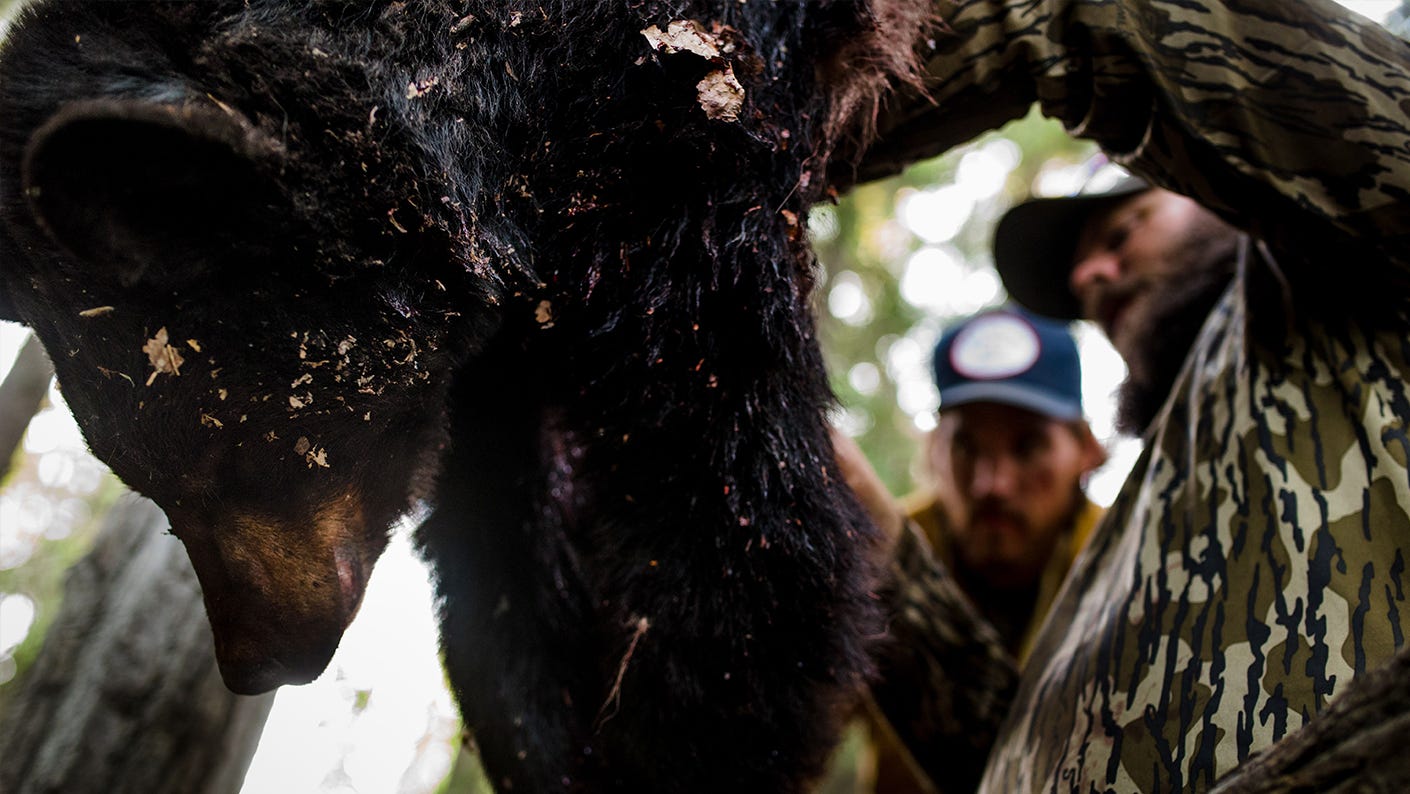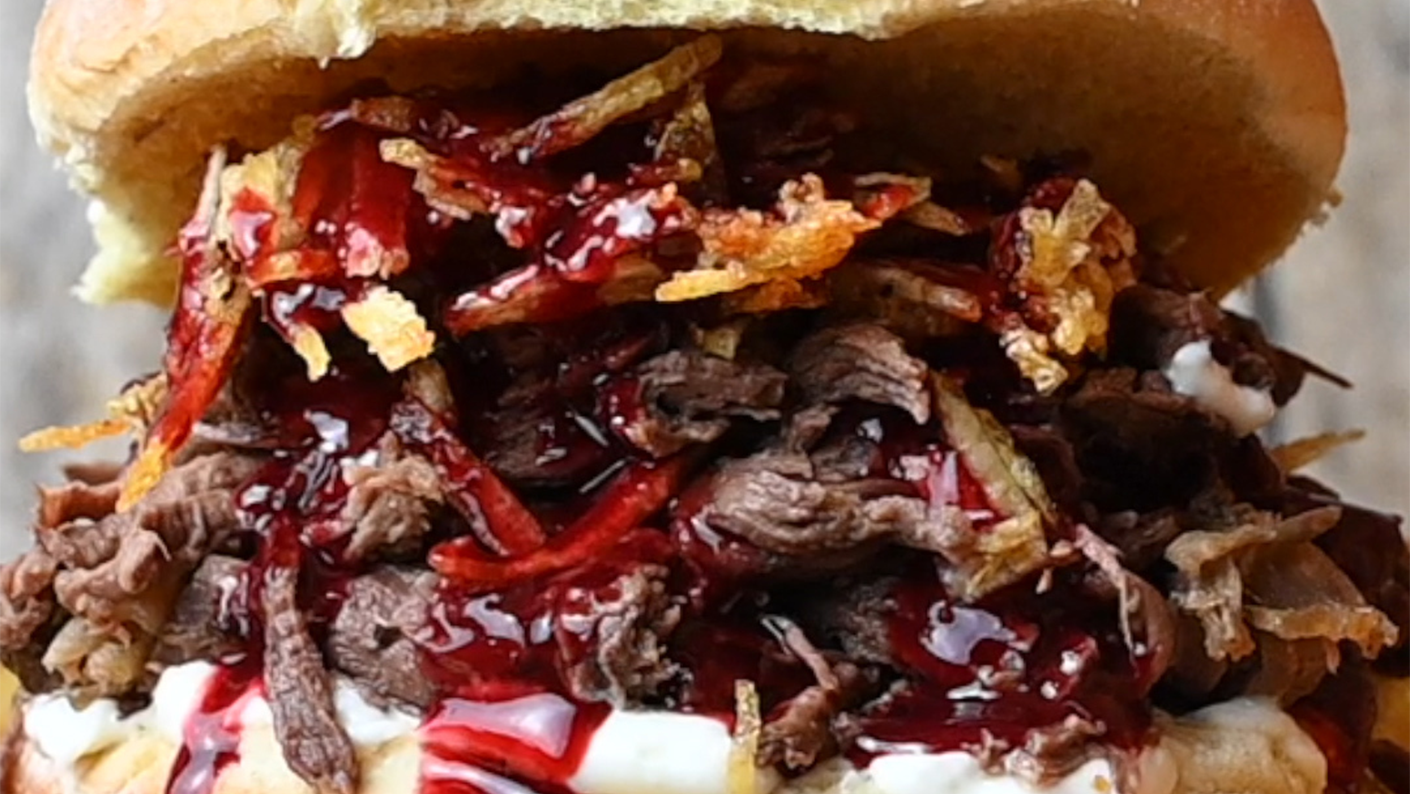Let’s Talk Bear

Don’t listen to the doubters: Bear meat is delicious. But understanding some basics about their diet and behavior can go a long way toward an incredible meal.
Bear meat is one of those meats that gets a bad rap when it comes to the wild game culinary world. The reason being is many folks don’t understand how to cook the meat, or the flavors found within its delicious, fatty muscles.
Flavor: Spring, Fall, and Coastal
Spring
One of the biggest flavor differences in bear meat comes from when you shoot it. When you’re hunting bear in the early spring months, most bears are coming from hibernation. They have depleted 90% of their stored fats and are now giant eating machines. For this reason, they are feasting on 70% fresh growth, like spring grasses, acorns, berries, and other fruits and plants. You will tend to find bears on hillsides feasting on fresh greens. This fresh produce intake starts to develop a beautiful, rich, flavorful fat within the meat as well as the fat layer directly under the skin.

Time of year, where you harvest your bear, and what a bear is eating, will determine the overall flavor profile.
If spring bear are eating meats, it tends to be fresh young fawns, rabbits, eggs, and other fresh kills or birthing deaths. This is the reason that bait stations work so well in the spring. The bears are attracted to sweet smelling treats, beavers and bread, because they are trying to fill up and get their depleted fats and energy back up.
Because they are eating fresh everything, this yields a better tasting meat, with sweeter and cleaner tasting fats. We’ve shot black bears off hillsides covered in blueberries and the bear’s fat is a deep purple. This very fact shows you that what the bears are eating plays a huge factor in the flavor.
Fall
If in the spring, the bears are eating fresh growth, new death, and berries, in the fall it’s going to be the opposite. In the fall we’ve seen bears on old summer kills, trash cans, and dumps; they have gone from foraging to scavenging. This scavenging is a survival instinct: The bears are trying to eat any and everything to build up enough fats to get them through hibernation. If it’s a sow, she is storing up not only for hibernation, but for birth and nursing as well.
Fall bears tend to have a stronger taste because of all the scavenging and eating any and everything in sight. The meat is not horrible, just not as sweet as it would be in the spring.
Coastal:
Coastal bear are going to taste 100% different than a Montana mountain bear. Coast bears tend to have a diet that consists of fish, sea weeds, and other ocean grasses. Once, we got a bear we’d been watching eat a bunch of dead crabs and eel grass and his meat tasted like a sea food restaurant.
If the blueberries in the spring impacted the flavor and fat color, you’d have to believe that those crabs, fish, and eel grass impacted this bear’s meat in the same manner. Not all bears that eat fish will have that “fishy” flavor. Sometimes they will eat a fresh salmon and then go and fill up on acorns, grass, and other berries in the area. Just know that a coastal bear will taste a lot different than a bear who’s whole life is lived inland.

If you are lucky enough to harvest a bear, make sure you handle the meat properly to not only get great flavors, but to make sure you kill potential parasites like Trichinosis.
Cooking Bear Meat
Temps and Trichinosis
Like all predators, there is a chance that bear meat can be laced with a nasty little parasite called Trichinosis. Trich, as many of us refer to it, is a parasitic invasion of the intestine. This attack can cause symptoms like diarrhea, abdominal pains, vomiting, and fevers. For this reason, it scares many people off from eating this incredible meat. There are some key cooking steps that will kill off Trich before it even has a chance to attack your gut.
- Cooking Temps: Studies show that Trich dies around 137° - 150°F. The only problem is that every iota of that meat must hit that temp, so cooking meat at a medium rare will not guarantee that every ounce has reached that internal safe eating temp. For this reason, myself and many others suggest cooking the meat till at least 165-170 degrees to be safe. You can reach these temps by slow cooking, pan cooking, grilling, or sous vide. Sous vide is a great way to cook those steaks and still get a nice pink center. But cooking the meat at 145° for 8 hours you’ve guaranteed every ounce of that meat has reached temp.
- Freezing: Studies show Trich dies at the following temps and times: -22°F for 95 days of freezing; 160-180 days at -4°F; or 280-330 days at 24°F. So, if you’ve got a standard deep freezer that keeps meats at -4°, you’d have to store that meat for 160-180 days to kill off all parasites within the meat itself.
Because most people don’t want to wait six months to start eating their meat, I love to slow cook and shred my bear meats. Below you’ll find a recipe that is simple, delicious and sure to elevate that bear meat to new heights.
Black Bear & Fresh Berry BBQ Sauce Sandwiches

Ingredients: Pulled Bear
2 pounds black bear
1 can favorite beer
1 cup venison or beef broth
1 white onion, rough cut
6 cloves garlic, smashed
3 tbsp Worcestershire
1 tbsp cracked pepper
1 tsp sea salt
2 tsp garlic powder
2 tsp smoked paprika
1 tsp cumin
Ingredients: Berry BBQ Sauce
2 cups fresh/frozen berries (Like huckleberry, blueberries or black berries.)
3/4 cup ketchup or tomato sauce
1 tsp liquid smoke
1/2 cup cider vinegar
1/2 cup brown sugar
1 tbsp molasses
1 tsp chili powder
1 tsp black pepper
1/2 tsp corn starch
- In the saucepan, add huckleberries and cook over low until the berries break down and release all the juice. Bring to a boil and reduce heat and simmer 3-5 minutes.
- Remove from heat and strain berries through a wire/mesh strainer, mashing through the strainer. Toss out mash and save the delicious juice.
- In saucepan combine juice and remaining ingredients, bring to a boil, constantly whisking so as not to burn. Reduce heat and simmer 5-10 minutes until sauce is the right consistency. You should be able to dip a soup spoon into the sauce and have it be covered when you remove it.
Directions: Black Bear
- In slow cooker or Dutch oven, add you bear meat and top with remaining ingredients. Cook on low for 6-8 hours, or high for 4-6 hours. Make sure your meat is covered by the liquid, if not flip meat half-way through, or better yet, add another beer.
- Cook until bear meat easily shreds with a fork. Remove bear, continue to shred. Add 1 cup of cooking liquid to shredded meat, to keep it moist for service.
- Add mayo, potato crisps, and homemade BBQ sauce to a toasted potato bun and enjoy.
For more mouthwatering recipes, connect with Jeremiah on Instagram, or check out his content on Facebook. If you’re interested in learning to hunt with a skilled mentor and chef as your guide, check out his Field to Plate classes.
It’s our hope you can learn and laugh along with the expert voices we feature on this blog. We want to be clear that the opinions you see featured here are just that: opinions. The content belongs to the authors and is not necessarily the opinion of Vortex Optics.
To learn more about what you’ve read, please like, follow, and otherwise support our authors.





